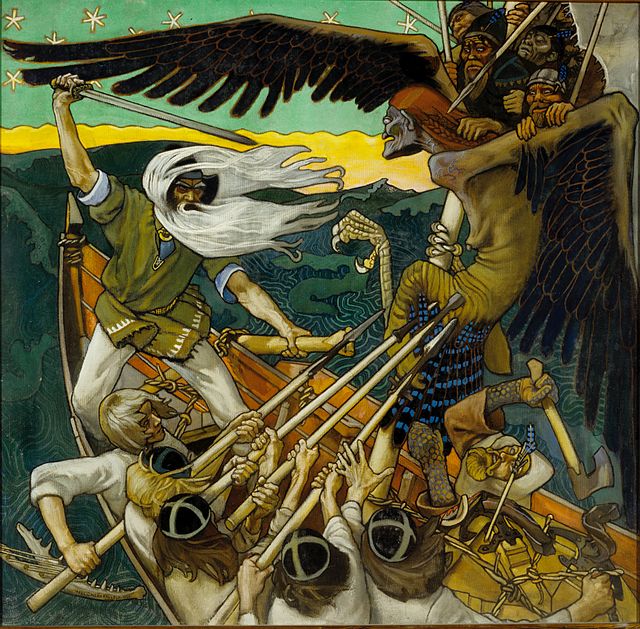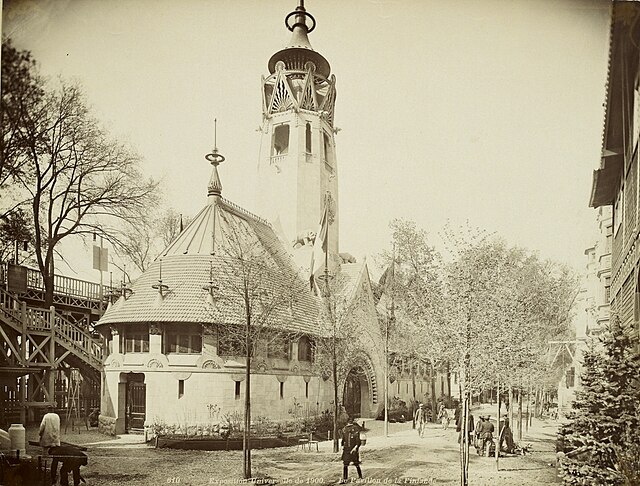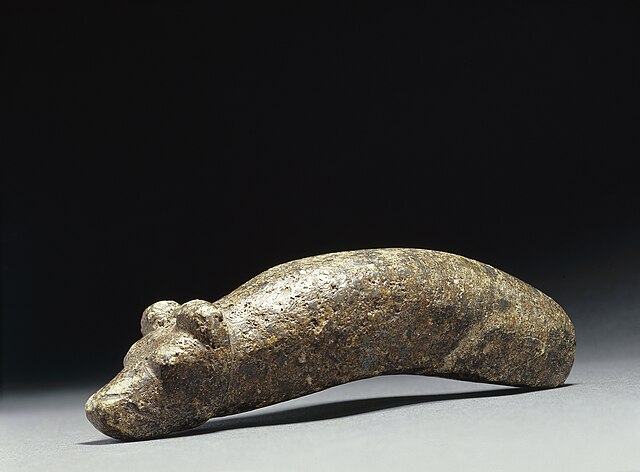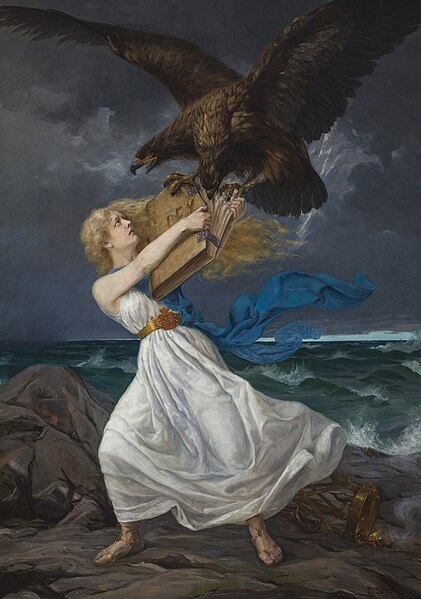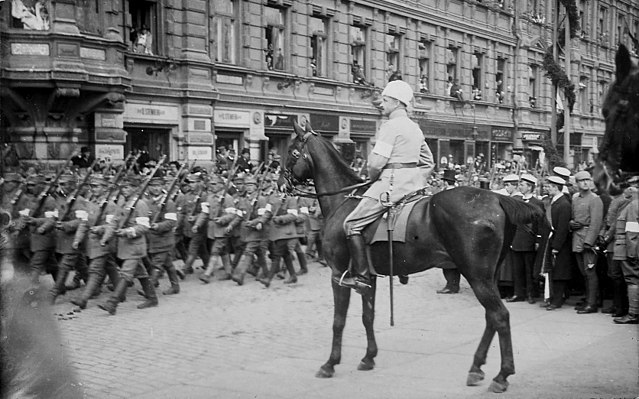Golden Age of Finnish Art
The Golden Age of Finnish Art coincided with the national awakening of Finland, during the era of the Grand Duchy of Finland under the Russian Empire. It is believed to span an era from the late 19th Century to the early 20th Century, approximately 1880 to 1910. The epic poetry form known as Kalevala, developed during the 19th Century, provided the artistic inspiration for numerous themes at the time, including in visual arts, literature, music and architecture; however, the "Golden Age of Finnish Art" is generally regarded as referring to the realist and romantic nationalist painters of the time. Notable figures of the time include Akseli Gallen-Kallela, Pekka Halonen, Albert Edelfelt, Jean Sibelius, Eino Leino, Helene Schjerfbeck, Emil Wikström, Eero Järnefelt and Eliel Saarinen.
Väinämöinen fight against Louhi about Sampo. Akseli Gallen-Kallela's The Defense of the Sampo, 1896.
The Finnish Pavilion at the Paris 1900 Expedition by Gesellius, Lindgren, Saarinen (fi)
Problem (Symposium) depicting Akseli Gallen-Kallela, Oskar Merikanto, Robert Kajanus and Jean Sibelius, painted by Gallen-Kallela himself, 1894
Ironesses, Helena Westermarck, 1883
Finland, officially the Republic of Finland, is a Nordic country in Northern Europe. It borders Sweden to the northwest, Norway to the north, and Russia to the east, with the Gulf of Bothnia to the west and the Gulf of Finland to the south, opposite Estonia. Finland covers an area of 338,145 square kilometres (130,559 sq mi) and has a population of 5.6 million. Helsinki is the capital and largest city. The vast majority of the population are ethnic Finns. The official languages are Finnish and Swedish, of which 84.9 percent and 5.1 percent of the population speak the first as their mother tongue. Finland's climate varies from humid continental in the south to boreal in the north. The land cover is predominantly boreal forest biome, with more than 180,000 recorded lakes.
Stone Age bear head gavel found in Paltamo, Kainuu
Now lying within Helsinki, Suomenlinna is a UNESCO World Heritage Site consisting of an inhabited 18th-century sea fortress built on six islands. It is one of Finland's most popular tourist attractions.
Edvard Isto, The Attack, 1899. The Russian eagle is attacking the Finnish Maiden, trying to steal her book of laws.
Finnish military leader and statesman C. G. E. Mannerheim as general officer leading the White Victory Parade at the end of the Finnish Civil War in Helsinki, 1918

